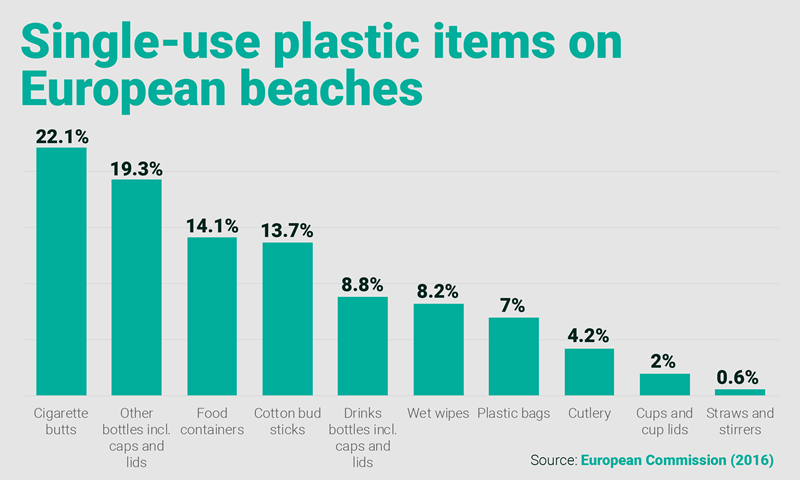The EU's single-use plastic directive: Turning the tide on plastic waste
*Please note that this report only includes an Excel data file if this is indicated in "What's included" below
What’s inside this report?
In response to the heightened awareness of plastic pollution, the EU has approved the single-use plastics directive aimed at reforming attitudes towards the consumption of plastics and reducing plastic pollution.
The directive aims to tackle the 10 most common single-use plastic items found on European beaches, which account for 49% of all waste.
Read our insight to understand:
- How the directive will affect supply and demand in the plastics industry
- Why we think the recycling industry needs much more investment if the directive’s targets are to be met
- Which European countries have the most work to do in order to meet the directive
- Will the directive’s initiatives help big brands to meet their ambitious recycled content targets?
The target placed on PET beverage bottles is arguably the most ambitious of those in the proposal.
Wood Mackenzie quoted in European Plastic Product Manufacturer
Report summary
Table of contents
- Executive summary
- Key implications:
- The rising tide of plastic waste
- Turning the tide
- The future is circular
- Single-use plastics under the spotlight
- Improving waste collection
- Collection does not guarantee recycling
- Impact of the Basel Convention
- A win-win for PET
- Summary
- Key findings
Tables and charts
This report includes the following images and tables:
- Per capita consumption of PET beverage bottles in 2017
- Major commodity plastics and their uses
- Europe waste collection and treatment by country
- EU PET bottle consumption and collection rate
- Key activities in PET recycling
- Bottle deposit schemes shown to boost bale quality
- European plastic waste exports on downward trend
- Industry targets for recycle content in PET bottles
What's included
This report contains:
















